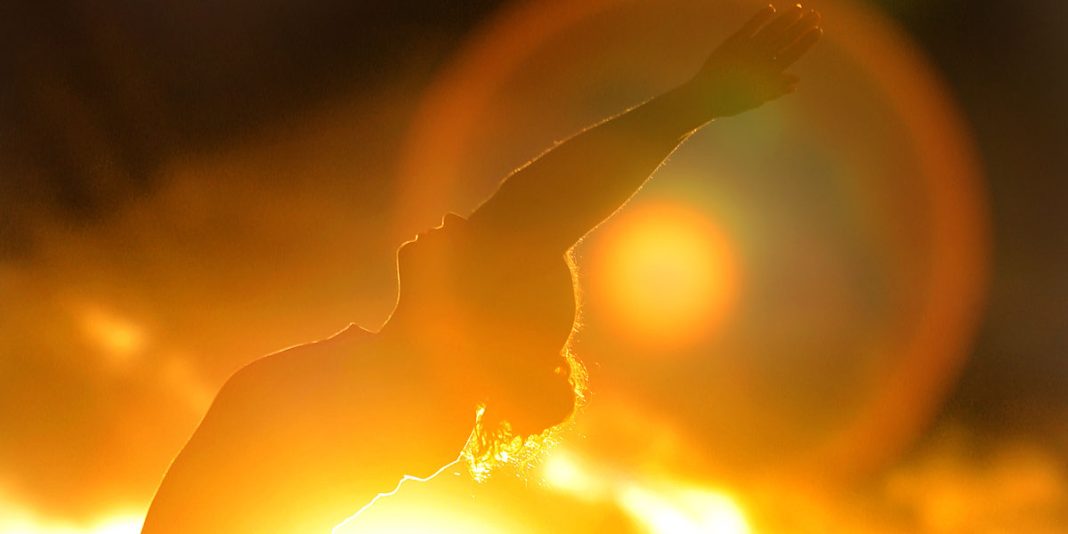HATHA YOGA:
Hatha Yoga relates to the combination of pranayama (breath work), asanas (postures), bandhas (lock of vital energy) and mudras (sacred, symbolic gestures).
The word Hatha comprises two Sanskrit syllables – “Ha” & “Tha”.
“Ha” indicates the sun – a heating, masculine energy flowing along the right side of the body.
“Tha” indicates the moon – a cooling, feminine energy flowing along the left side of the body.
Hatha Yoga is bringing an essential balance to both of these energies. ‘Ha’ and ‘Tha’ mean the union of the sun and the moon, the union of Prana and Apana Vayus.
The practice of Hatha asanas controls the emotions, produces mental peace, distributes prana evenly throughout the body and its systems. Hatha Yoga also helps maintain the healthy function of the internal organs by massaging the various abdominal organs.
Ha – the energy of the Sun, masculine energy, active energy.
Tha – the energy of the Moon, receptive cool feminine energy.
Yoga (Yuj) – union. The union of universal consciousness with individual consciousness.
Hatha Yoga is a systematic course of exercises, dealing with Shat Karmas, Asanas, Pranayamas, Mudras, Bandhas and exercises on concentration. Hatha Yoga is a path toward creating balance.
Hatha Yoga is like the tortoise that supports the World. It relates to the restraint of breath (Pranayama), Asanas, Bandhas and Mudras. ‘Hatha’ means any tenacious practice till the object or end is achieved. For example: Trataka (Candle Gazing); standing on one leg (a tapas) and similar poses are all Hatha Yoga practices. Once in the posture, the yogi then concentrates on deep breathing techniques to still the posture and calm the mind.
Hatha Yoga is inseparable from Raja Yoga. Hatha Yoga prepares the student for the practice of Raja Yoga. Raja Yoga begins where Hatha Yoga ends. Raja Yoga and Hatha Yoga are interdependent. Raja Yoga and Hatha Yoga are the necessary counterparts of each other. No one can become a perfect Yogi without a knowledge and practice of both of these Yogas.
A Hatha yogi starts their Sadhana with body and Prana. A Raja Yogi starts their Sadhana with their mind. A Jnana Yogi starts their Sadhana with Buddhi or intellect and will.
A Hatha yogi receives Siddhis (psychic powers) by uniting Prana and Apana and by taking the united Prana-Apana through the six Chakras (centres of spiritual energy) to Sahasrara at the crown of the head. A Raja Yogi receives Siddhis by Samyama, i.e., combined practice of Dharana, Dhyana and Samadhi at one time. A Jnana Yogi exhibits Siddhis through pure will or Sat-Sankalpa. A Bhakta receives Siddhis through self surrender and the consequent descent and bestowing of Grace.
Kriyas, viz., Neti, Dhauti, Nauli, Basti, Tratak and Kapalabhati belong to Hatha Yoga. Those who have got much phlegm in the body should practice these Kriyas. Learn these under an expert Hatha Yogi. All yogis need not practice these Kriya exercises for purification.
Hatha Yoga is not the goal. It is only a means to an end. Gravitate to Raja Yoga after possessing good health.
Attain good health. Without health how can you live? Without health, how can you earn? Without health how can you get success in Yoga or any undertaking? Possess wonderful health through the practice of Hatha Yoga.
No Hatha Yoga, no success,
No Hatha Yoga, no Samadhi,
No Hatha Yoga, no health,
No Hatha Yoga, no Veerya,
No Hatha Yoga, no beauty,
No Hatha Yoga, no long life.
– Sri Swami Sivananda

